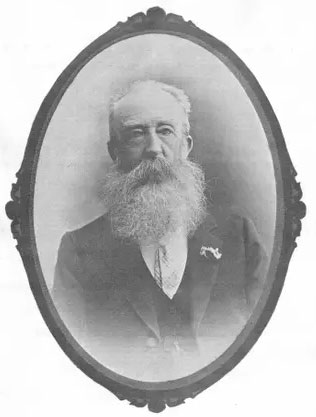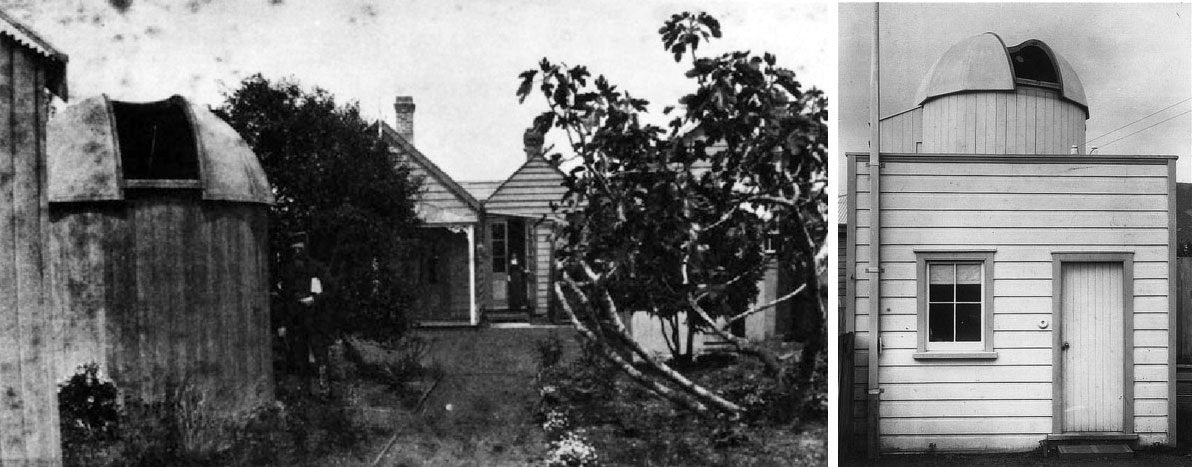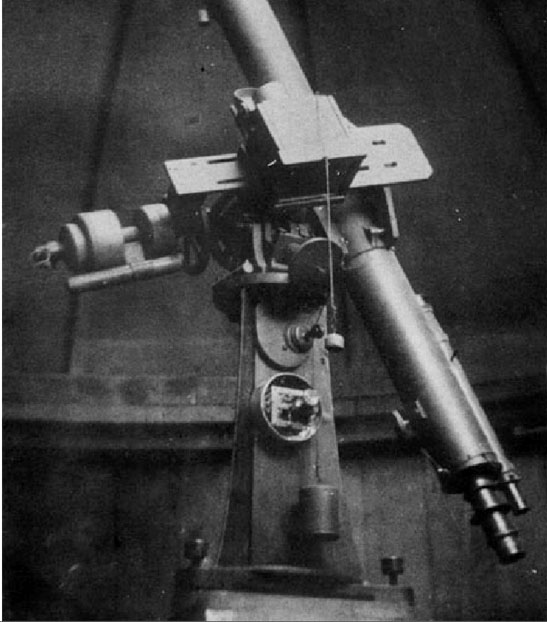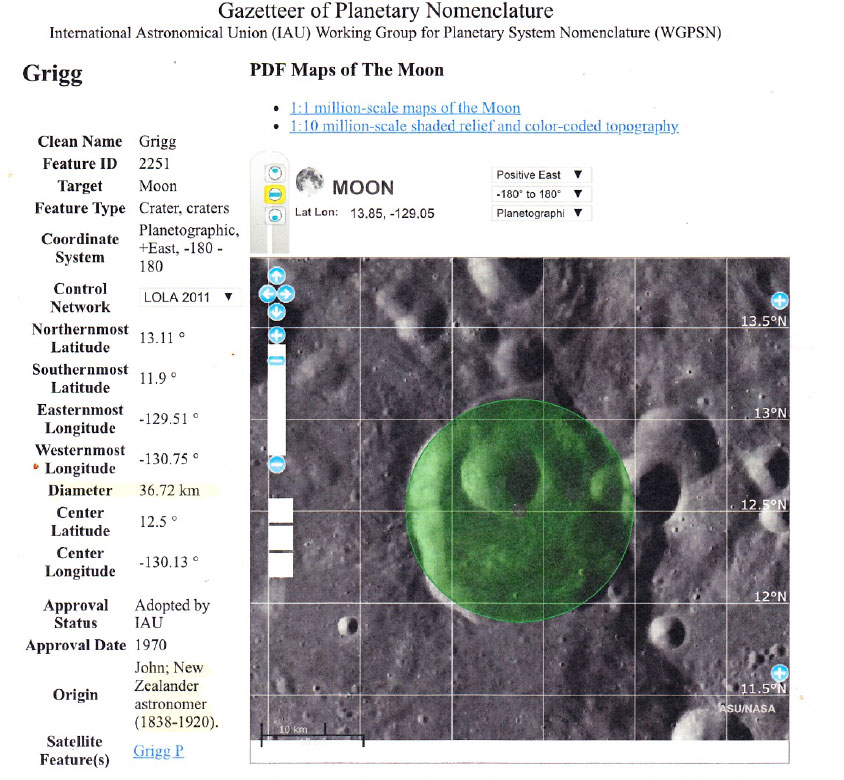John Grigg, comet discoverer and Christian

In June of 2020 it is one hundred years since the passing of John Grigg, New Zealand’s most famous early astronomer. He discovered three comets which now bear his name; he also pioneered astrophotography in New Zealand, and he was a firm believer in the Lord Jesus Christ.
Early education and interests
Born in London in 1838, John Grigg’s schooling included a grounding in maths and the sciences of that time, and as a teenager he became interested in astronomy from visiting the Royal Observatory at Greenwich and observing the Prime Meridian (i.e. Longitude 0°), established there in 1851, on which the world’s time is based. Married at age 20, he brought his family to New Zealand in 1863, and settled in Thames, where he set up a furnishing business and music store.
Transits of Venus
His youthful interest in astronomy was revived in 1874 by the expectation that a transit of Venus across the surface of the sun would be visible from Thames that year. Transits of Venus had more than just scientific interest for New Zealanders, as it was the June 1769 transit that brought James Cook to the Pacific to view the event from Tahiti, from where he sailed on to ‘discover’ New Zealand. Hence New Zealanders speak English rather than Dutch, the language of earlier European discoverer, Abel Tasman.
Although bad weather intervened in 1874, John Grigg was able to view a second transit of Venus in 1882, and this motivated him to erect a small observatory behind his shop in 1884. This was an 8-foot (2.44 m) diameter, wooden structure with a revolving dome roof that housed an 8.9 cm (3.5 inch) f/15 Wray refractor. This was relocated as a larger roof-mounted observatory at his home site in 1894, when he retired from business, and his hobby became his major preoccupation. His main interest was searching for comets, and he systematically explored the sky for these during the early morning hours from 2 am to 5 am.

Comets discovered
Grigg discovered his first comet near the constellations Leo and Virgo on 22 July 1902 during systematic comet sweeping. He described it as being “a faint nebula about twice the diameter of Jupiter”,1 and he used 14 observations from 23 July to 2 August to compute the comet’s orbit. These data were published in the Monthly Notices of the Royal Astronomical Society in England. It is well that he was able to record the orbit because no one else at that time saw his comet. It was not until it returned in May 1922 and was rediscovered by Frank Skjellerup in South Africa that Grigg’s computations of the orbit enabled the two discoveries to be recognised as one-and-the-same comet. It is officially now known as Comet 1902 II P/Grigg–Skjellerup.


On 10 July 1992 this comet was the subject of a flypast by the Giotto spacecraft of the European Space Agency, but unfortunately no pictures could be taken because earlier in the flight dust grains from Halley’s comet had impacted the Giotto camera and rendered it inoperable.
On 17 April 1903 John Grigg discovered his second comet and continued observing it for a further 29 nights. He cabled details to other astronomers and it was then seen in Australia and South Africa. It is known as Comet 1903 III Grigg. For each of these two discoveries Grigg was awarded separate Donohoe medals by the Astronomical Society of the Pacific.
On 10 February 1906 Grigg discovered what he thought was his third comet, only to learn that it had already been discovered in December 1905 by French astronomer Michel Giacobini. His next discovery was on 19 March 1906 when he observed a comet in the constellation Cetus, again only to learn that it had already been detected—by David Ross of Melbourne on 14 February that year.
Then on 8 April 1907 Grigg was the first to detect another comet, this one confirmed by U.S. astronomer John Mellish 5 days later. It is known as 1907 II Grigg–Mellish. Apart from new comets, Grigg observed many others. According to the Family History written by John’s son Matthew, from 1886 to 1914 John observed every comet visible in his telescope from New Zealand.

In summary of Grigg’s cometary work, it is primarily as the discoverer of the three comets that bear his name that John Grigg is now remembered. In 1906, he was elected a Fellow of the Royal Astronomical Society of England.
Astrophotography
In addition to comet searching, John Grigg was a pioneer of astrophotography in New Zealand. He devised and built a camera attachment to his telescope, along with the mechanical means to move it all at the correct speed to keep the object in focus for long periods of time as the earth rotated, and he taught himself how to use it by trial and error.
Comets photographed by Grigg included the two-tailed Great Comet of 1901, and the excellence of his photographs of it led the Royal Astronomical Society to include them in its official records of this comet. He also photographed Halley’s Comet in 1910.
In 1970, John Grigg was honoured by the International Astronomical Union by having a crater on the Moon named after him. It is located on the far side of the Moon. See image.

Popularizer of astronomy
John Grigg was committed to popularizing his hobby. He often gave public lectures on astronomy. His observatory was always at the disposal of visitors in the evenings, when he showed them the ‘glory of the heavens’, and explained many of its phenomena. He kept a Visitors Book in which were recorded many then-famous names, but most were those of humble folk, adults and children, who enjoyed the time spent with John beneath the stars. For many years, he wrote a regular monthly column titled “Astronomical Notes” for the Otago Daily Times in Dunedin, and he provided the Thames Star newspaper with a steady supply of information about astronomical discoveries, celestial objects and up-coming events.
Spiritual influence
John Grigg was a man of great integrity, having a Christian faith that was both deep and practical. As recorded in Matthew Grigg’s biography of his father, on one occasion, on learning of the hardship of a neighbouring family through the death of the bread-winner there, John immediately ordered that the Grigg family dinner, already on the table, be taken as it was to the afflicted family, much to the awe of his own family.
He and his wife were founding members of Thames Baptist Church, as is commemorated in the memorial window there, and he was also a deacon, trustee, choirmaster and organist, as well as a regular attender at the Wednesday evening prayer meeting.
In conclusion, John Grigg’s stature as an astronomer is revealed by the fact that he stood alone. Yet he set up what was in effect an astronomical centre in the province. Although entirely self-taught in his hobby, he was New Zealand’s leading early astronomer, and New Zealand’s cometary astronomy largely owes its genesis to him.
He died at Thames on June 20, 1920, at the age of 82, but his spiritual influence continues on. Several of his descendants to the second and third generation have been Christian ministers or long-term overseas missionaries. His grandson, the writer of this article, is among them—for 20 years a missionary with Overseas Missionary Fellowship, and for the last 30 years a staff writer for Creation Ministries International in Australia.
References and notes
- Monthly Notices of the Royal Society Astronomische Nachrichten, 159: 389, 1902. Return to text.

Readers’ comments
Comments are automatically closed 14 days after publication.